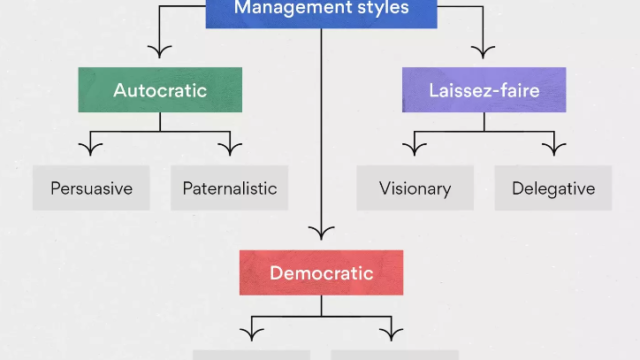Herzberg’s Two-Factor Theory: Understanding Employee Motivation
Herzberg's Two-Factor Theory
Brief Background: Frederick Herzberg (1923-2000) was an American psychologist and professor renowned for his work in the field of organizational behavior. He is best known for developing the Two-Factor Theory, which has significantly contributed to our understanding of employee motivation and job satisfaction. Herzberg obtained his Ph.D. in psychology from the University of Pittsburgh and became a prominent figure in management and motivation research.

The Need for Research: Herzberg's Two-Factor Theory emerged from a need to understand what motivates employees in the workplace. Traditional theories at the time, such as Maslow's Hierarchy of Needs, focused on the concept of needs and how they influenced behavior. However, Herzberg recognized that factors beyond mere needs impact employee satisfaction and motivation. His research aimed to uncover the factors differentiating job dissatisfaction and job satisfaction.
Summary:
1- Hygiene Factors: Herzberg identified certain factors in the work environment that he called "hygiene factors." These factors, such as salary, job security, working conditions, and organizational policies, are considered basic needs that must be met to prevent dissatisfaction. Employees become dissatisfied when these factors are absent or inadequate, but their presence alone does not increase satisfaction.
2- Motivators: In addition to hygiene factors, Herzberg identified a separate set of factors called "motivators." These factors, such as recognition, responsibility, achievement, and growth opportunities, contribute to job satisfaction and intrinsic motivation. Unlike hygiene factors, the presence of motivators can enhance job satisfaction and lead to increased motivation and performance.

Importance in the Field: Herzberg's Two-Factor Theory has had a significant impact on the field of organizational behavior and human resource management. It challenged traditional views on motivation and highlighted the importance of intrinsic factors in driving employee satisfaction and motivation. This theory emphasizes the need for organizations to go beyond basic hygiene factors and focus on providing opportunities for personal growth, recognition, and meaningful work experiences.
Real-life Examples:
1- Company A provides employees with competitive salaries, benefits, and a comfortable working environment (hygiene factors). However, despite these provisions, the employees feel dissatisfied and unmotivated because they lack opportunities for personal development, challenging assignments, and recognition (motivators).
2- Company B offers its employees a supportive work environment, growth opportunities, and recognition programs (motivators). As a result, the employees feel satisfied, motivated, and committed to their work, leading to increased productivity and performance.
Relevance for Trainers: Trainers should teach Herzberg's Two-Factor Theory in their education sessions because it provides valuable insights into employee motivation and job satisfaction. Understanding the distinction between hygiene factors and motivators helps trainers design effective strategies to enhance employee engagement and performance. By addressing both hygiene factors and motivators, trainers can create a work environment that fosters satisfaction, motivation, and productivity.
Relevance for Organizations: Herzberg's Two Factor Theory holds significant relevance for organizations in various ways:

Employee Motivation:
Herzberg's Theory suggests that employee motivation is influenced by two types of factors: hygiene factors and motivators. Hygiene factors include aspects such as salary, working conditions, job security, and organizational policies. While the presence of hygiene factors alone does not necessarily lead to high motivation, their absence or deficiency can result in dissatisfaction. Motivators, on the other hand, include factors like recognition, growth opportunities, responsibility, and achievement. These motivators directly contribute to employee satisfaction and intrinsic motivation, leading to higher levels of engagement and performance.
Recruitment and Selection:
Herzberg's Theory has implications for recruitment and selection processes. Organizations should not only focus on meeting the basic hygiene factors to attract candidates but also emphasize the presence of motivators. By highlighting growth opportunities, challenging assignments, and a positive work environment during the recruitment process, organizations can attract candidates who are more likely to be motivated and satisfied in the long run.
Leadership Development:
Herzberg's Theory emphasizes the importance of motivators in driving employee satisfaction and motivation. Leaders can apply this theory by providing their team members with opportunities for growth, recognizing their achievements, and delegating meaningful responsibilities. By focusing on creating a motivating work environment and addressing employees' intrinsic needs, leaders can enhance their team's motivation, job satisfaction, and overall performance.
Performance Management:
In performance management, Herzberg's Theory suggests that solely focusing on external rewards or punishment (hygiene factors) may not be sufficient to improve employee motivation and job satisfaction. Instead, organizations should incorporate motivators such as providing constructive feedback, recognizing achievements, and offering opportunities for skill development. By aligning performance management practices with motivators, organizations can foster a culture of continuous growth, intrinsic motivation, and improved performance.
Team Dynamics:
Herzberg's Theory can impact team dynamics by emphasizing the importance of motivators in enhancing collaboration and engagement. By promoting teamwork, recognizing individual and collective achievements, and providing growth opportunities, teams can experience higher levels of motivation and job satisfaction. Additionally, addressing hygiene factors, such as ensuring a positive work environment and fair distribution of resources, can contribute to better team dynamics and overall team performance.
Overall, Herzberg's Theory provides valuable insights into employee motivation and has implications for various areas within organizations. By considering both hygiene factors and motivators, organizations can create an environment that fosters employee satisfaction, engagement, and ultimately, organizational success.
References:
Herzberg, F. (1968). One more time: How do you motivate employees? Harvard Business Review, 46(1), 53-62.
Herzberg, F., Mausner, B., & Synderman, B. B. (1959). The motivation to work. John Wiley & Sons: New York.
Founder
Related Topics
Herzberg’s Two-Factor Theory: Understanding Employee Motivation 0 reviews
Login to Write Your ReviewThere are no reviews yet.












